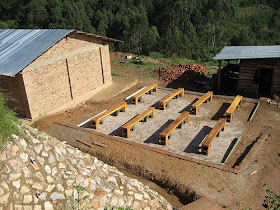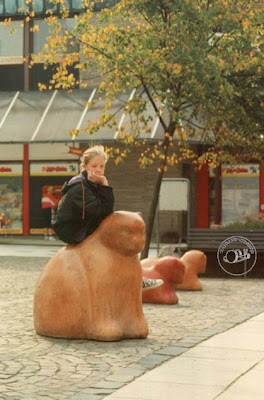
One of the arguments I hear about innovative or natural playground elements is that they won't 'last' as well as commercial playground equipment.

It seems to be universally assumed that metal playgrounds are the most durable. So I was interested to find this article from the Honolulu Advertiser from January 23, 2008, as posted at
'playspaces for children in hawaii':
PLAYGROUNDS IN DISREPAIR
By: Eloise Aguiar
Playground equipment installed at dozens of public parks less than 10 years ago is deteriorating due to rust, corrosion and wear, and the lack of a comprehensive city maintenance program has left many of the structures with holes or broken pieces that residents say pose a safety hazard and can take months to repair. Conditions at a small community park on Peterson Lane in Kalihi are typical of what parents and Honolulu's youngest citizens have to deal with at many parks.A ladder is missing from the play structure, the soft flooring used to prevent injuries in the event of a fall has large ruts and the equipment is covered with graffiti...some parents no longer allow their kids on the playground because it's in such bad shape.
Gary Lockwood..said he lives near four parks and all the play equipment has problems including a sharp, rusty hole in the deck at Enchanted Lake Park, a broken viewing bubble and slide that are boarded up at Kailua District Park, holes in the resilient surface at Pohakupu Park and more rust at Ka'elepulu Park.
From 1999 to 2003 the city spent almost $8 million to remove unsafe play equipment and install new equipment at more than 110 city parks. The playgrounds included resilient playing surfaces and accessible pathways costing from less than $100,000 to $125,000 for each site. Today, there are problems at parks across the island. In Kalihi, Salt Lake and at community parks on Beretania and Kalakaua in urban Honolulu, pieces of playground apparatus are missing and chunks of padding are gouged that could lead to falls. Equipment in Sunset Beach and at Waimanalo and Nanakuli beach parks got so bad that structures had to be removed."
I realize that all playground equipment requires appropriate maintenance, but all that money and then removal within ten years? I'd hardly call that durable.
I'd be interested in your thoughts on the durability of current commercial equipment.
[images from a Berlin playground 'cemetery' found at
richardthe]































